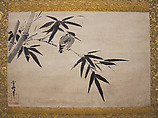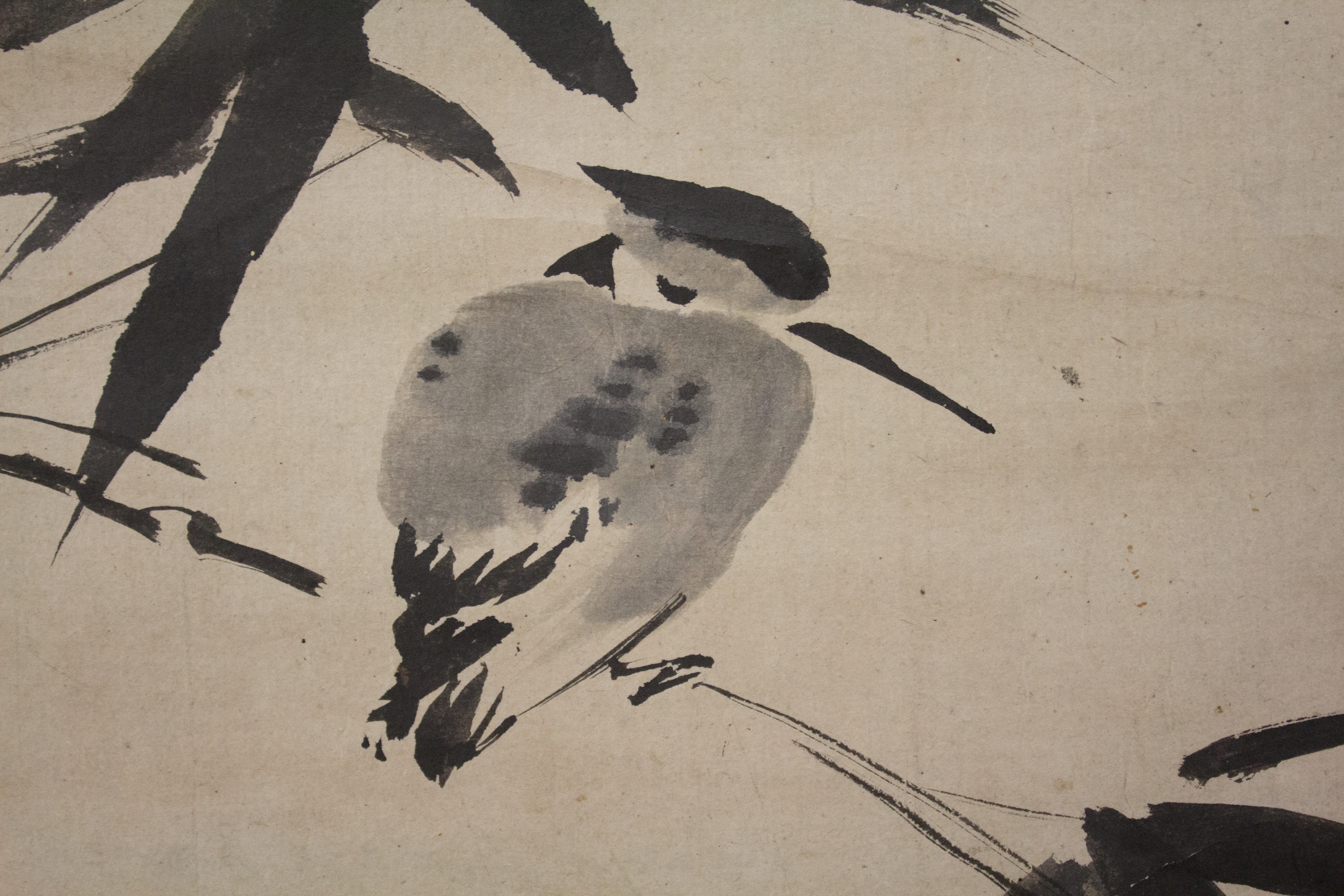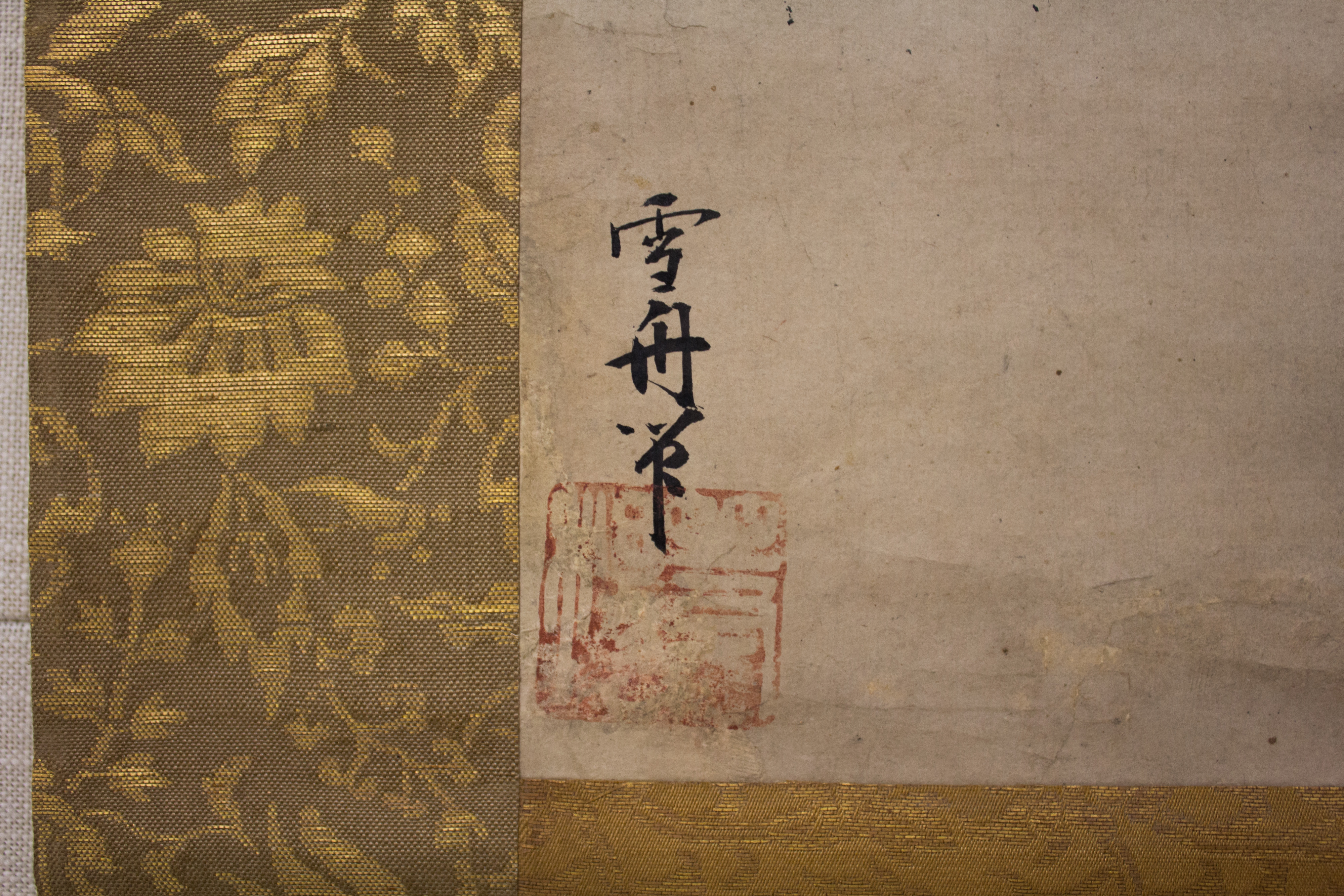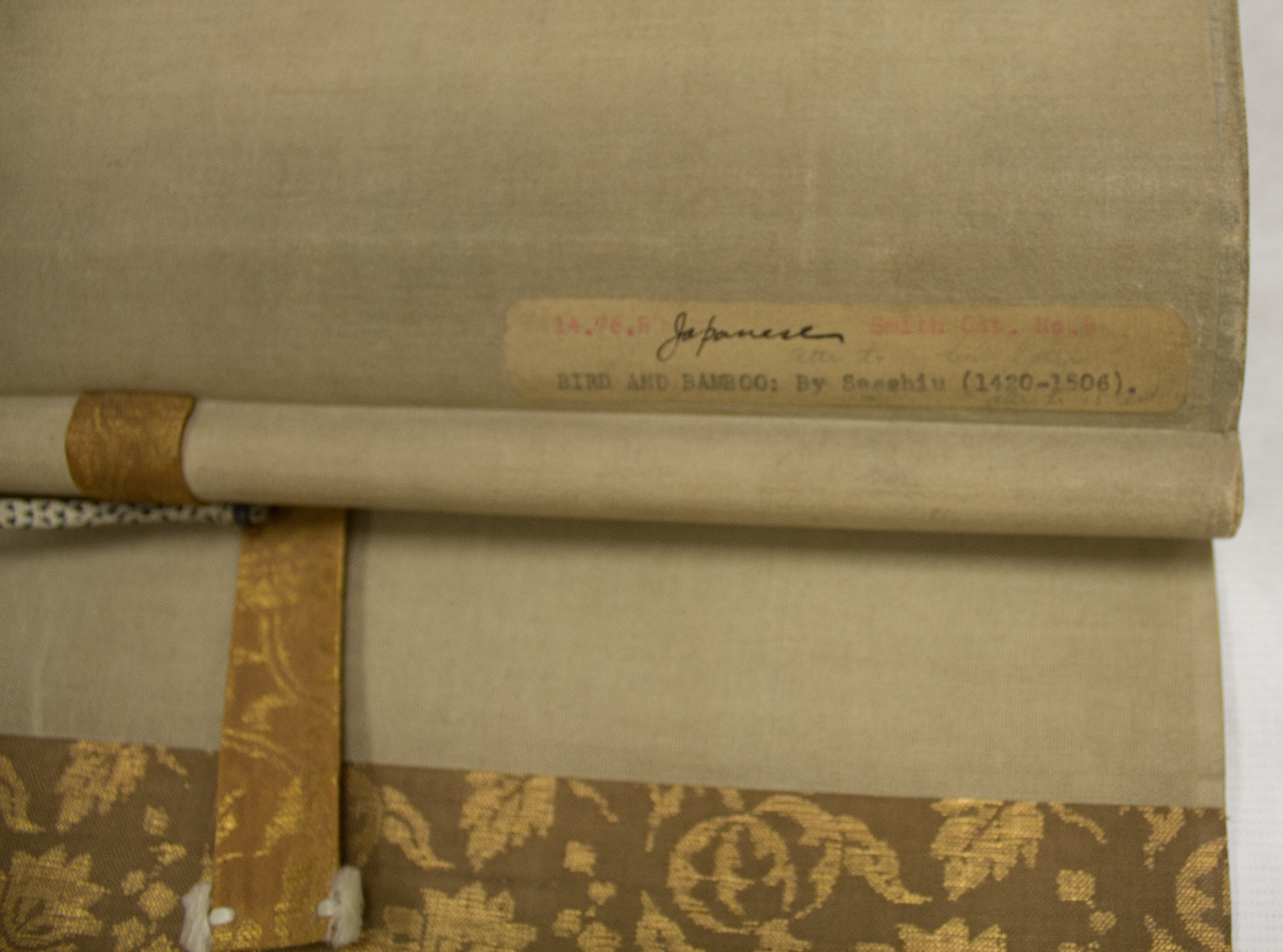Kingfisher and Bamboo
Formerly attributed to Sesshū Tōyō 雪舟等楊 Japanese
Not on view
Sesshū Tōyō was a highly celebrated medieval Japanese painter specializing in Chinese-style ink painting, and works in his style remained in high demand for centuries after his death at the beginning of the sixteenth century. This nineteenth-century forgery entered The Met's collection in 1914 along with nearly two hundred other Japanese and Chinese artworks from the collection of Charles Stewart Smith (1832–1909), a Trustee of the Museum. Smith was primarily a collector of European paintings but also acquired a large number of Japanese and Chinese works of art during the last two decades of his life, after he and his third wife honeymooned in Japan in 1892.
This image cannot be enlarged, viewed at full screen, or downloaded.
This artwork is meant to be viewed from right to left. Scroll left to view more.









